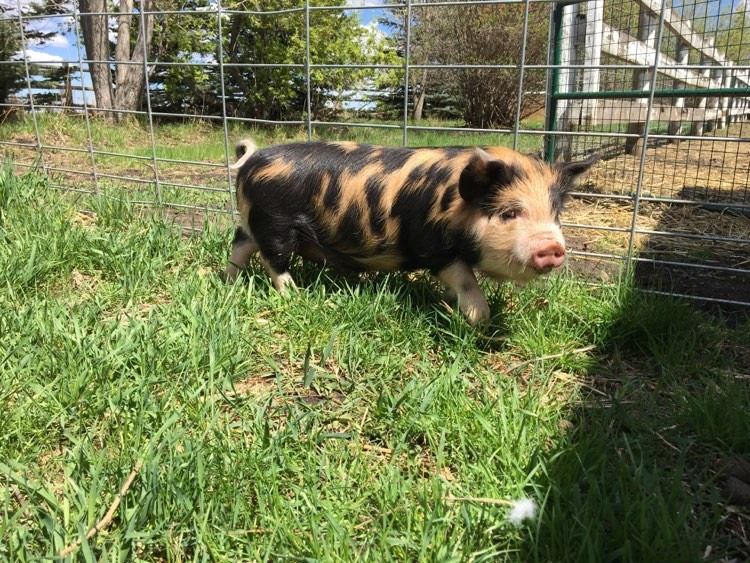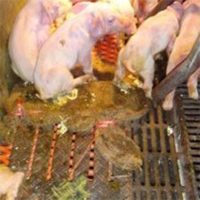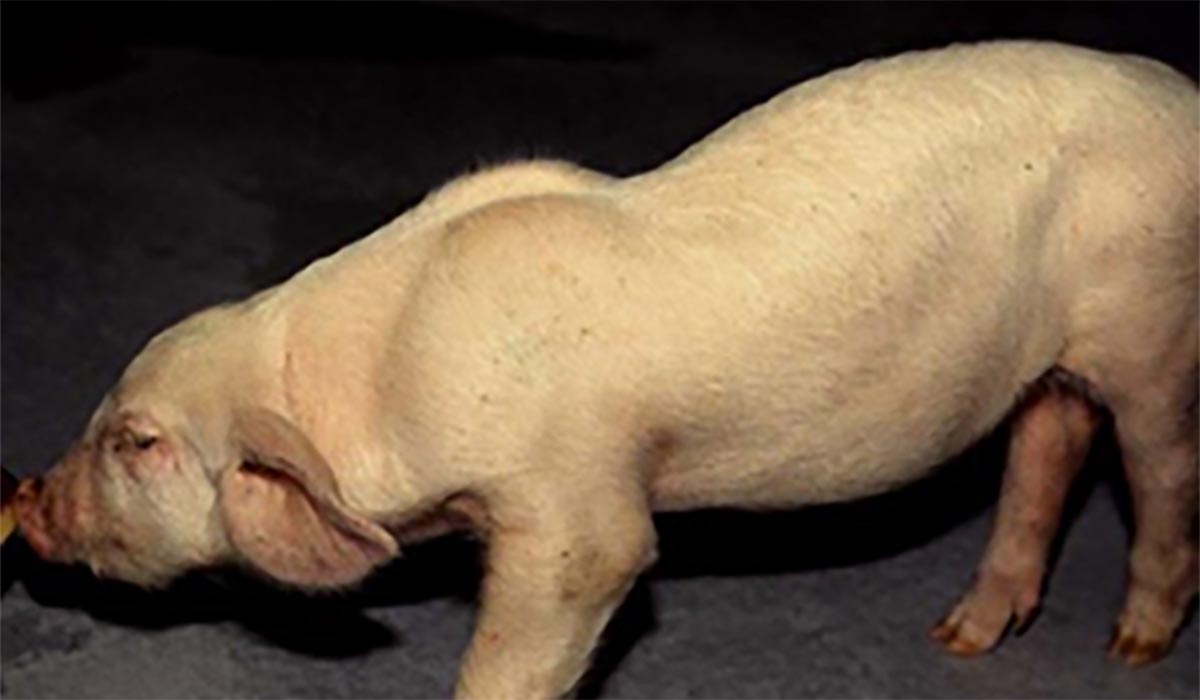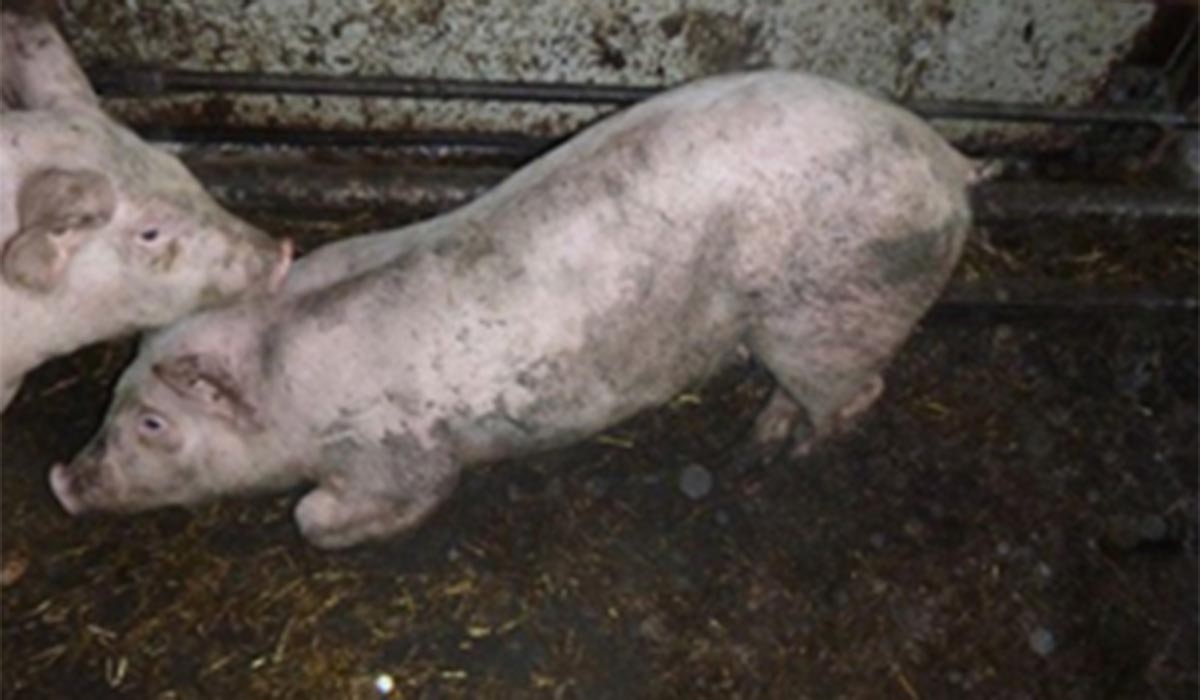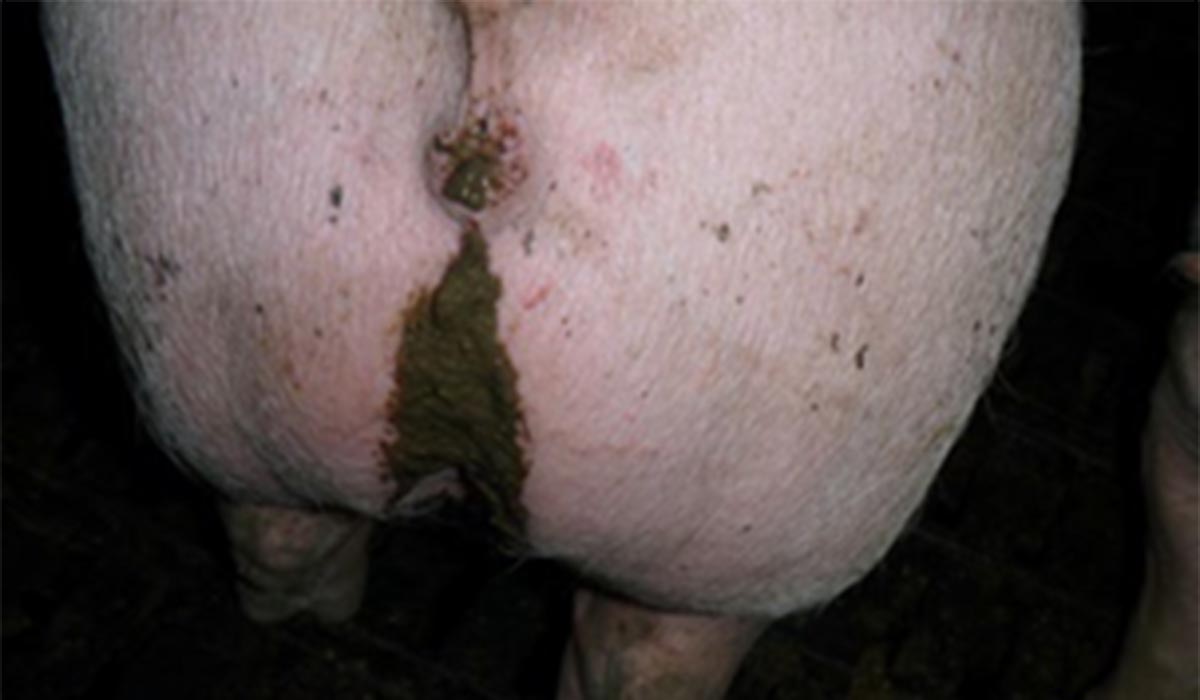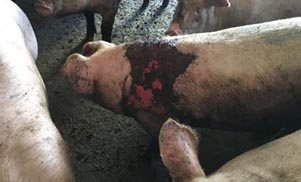How is disease spread amongst pigs? There are a number of ways in which disease can spread throughout your pigs. Sometimes diseased or healthy pigs incubate disease, while on other occasions it is transferred from other animals (wildlife, pets, other farm animals), vermin and insects. Animals are not the only source of disease transmission, movement of people, contaminated feed and bedding, improper disposal of dead animals, or contaminated equipment and vehicles can also contribute to transmission of disease to your pigs.
If you have pigs, at some point in time they will become sick and require treatment. It’s important to know when you should contact a veterinarian to ensure a high level of care and wellness for you pigs. You should contact a veterinarian if you see some of the following signs:
- There is a high number of sick or dead pigs.
- Pigs become sick or die of a unknown cause.
- You notice severe and/or bloody diarrhea.
- You notice nervousness or behaviour changes.
- You notice a severe hacking cough.
- Pigs are lethargic, listless or depressed.
- There is a rapid spread of signs/symptoms.
Contact a veterinarian immediately if you notice higher than expected mortality, scouring leading to death in piglets, any vesicles/blisters on hooves or nose, or if something does not feel right!
Common Swine Diseases
Several diseases are more commonly seen in outdoor production. Consult with a veterinarian early if you notice symptoms that you have not seen before.
Parasites
Some parasites can remain in the meat and become a risk to human health if the meat is not handled or cooked properly.
Signs
- Poor growth, hairy, scabby skin, diarrhea, pot-bellied and spine protruding
Prevention
- Combo dewormer (Ivermectin® and fenbendazole)
- Consult with your veterinarian for alternatives
Treatment
- Combo dewormer (Ivermectin® and fenbendazole)
- Consult with your veterinarian for alternatives
Respiratory Disease
Signs
- Coughing, sneezing, breathing hard, standing with elbows protruding out, noisy breathing
Prevention
- Consult with a veterinarian – a vaccination program and further diagnostics might required
Treatment
- Anti-inflammatory and antibiotics might be required
- Separate from others and monitor the rest of the herd
Piglet Scours
Signs
- Yellow/watery diarrhea from piglets, piglets getting skinny, piglets shivering, possible death in piglets
Prevention
- Warm, dry, and clean area for farrowing
- Provide extra heat at farrowing
- Vaccinate sows pre-farrow
Treatment
- Kaolin pectin, activated charcoal, or starch products (e.g. potato starch)
- Electrolytes in dish
- Warmth for piglets
- Possible antibiotics
- Consult with a veterinarian if incidence is high in many litters
Septicemia
Signs
- Red/purple ears, possibly red bellies/udders/hind legs, possibly shaking/tremoring, not eating
Prevention
- Good hygiene, proper feed/nutrition, proper housing/ environment, not mixing new pigs from unknown health sources
Treatment
- Anti-inflammatory and may need antibiotics
- Separate from others and monitor the rest of the herd
Salmonella or Ileitis
Salmonella can be a risk to human health. Always wash your hands when working with pigs
Signs
- Ileitis – signs can include diarrhea (can be bloody), poor growth, and sudden death in growing pigs
- Salmonella – signs can include diarrhea, poor growth, scouring in piglets, sepsis, and sudden death
Prevention
- Vaccination for ileitis
- Vaccination for some strains of salmonella
- Proper washing, disinfection, and drying of environment and equipment used with pigs
Treatment
- Requires antibiotics
Mineral Deficiency
Signs
- Most common is iron deficiency in piglets (can lead to pale piglets, anemia, death, and can look like pneumonia)
Prevention
- Give all piglets 200 mg iron dextran before 4 days of age
- Add a vitamin/mineral supplement to all pig rations if not feeding a complete feed
Treatment
- Supplementation
- Consult a veterinarian
